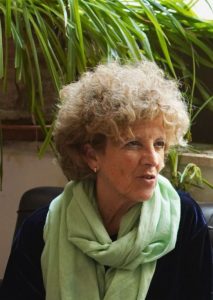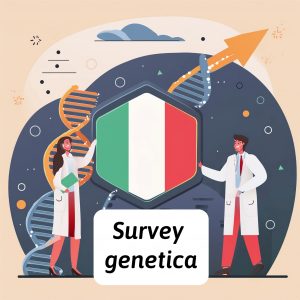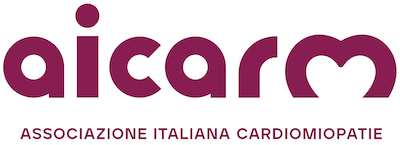Dr. Francesca Torricelli, former Director of the Genetics Unit of the AOU Careggi

Dr. Francesca Torricelli
In the March 2024 Newsletter, the results of the survey were published, carried out in 2023 by geneticists Dr. Francesca Girolami (Florence) and Dr. Maria Iascone (Bergamo), on the availability of genetic testing for patients with Cardiomyopathies, at the main Italian medical genetics laboratories of the NHS.
Considering that this survey involved the laboratories belonging to the Group of 31 laboratories dealing with Cardio-Arrhythmias, it is interesting to evaluate whether the distribution of genetic investigations on the Italian territory for these pathologies adheres to current scientific recommendations. This is in order to ensure a quality clinical diagnostic path and in the correct time, and to avoid leaving patients without a causative genetic diagnosis and therefore perceiving that they are not carriers of a hereditary cardiac pathology.
Analyzing the first data, we observe that the number of genetic investigations carried out is high. However, the distribution is very uneven between the various laboratories, with 5 laboratories carrying out a number greater than 500 tests/year and 3 laboratories carrying out a number lower than 100 tests/year. It comes to mind that if those 6500 tests were concentrated in dedicated laboratories for cardiac pathologies and therefore with a multidisciplinary team and advanced technologies, perhaps an optimal quality path could be ensured, with rapid response times, lower costs and archiving of samples in “biobanks” certified.
 The "biobanks” certified, which maintain patients' DNA for future reanalysis, are recognized in the European network of biobanks (BBMRI the node of the Italian network). They are useful for being able to reanalyze DNA with new methods, for further research with more updated panels and also for selecting future therapies. They also allow participation in international research projects on the evaluation of genetic mutations and their impact on the evolution of different forms of cardiomyopathy.
The "biobanks” certified, which maintain patients' DNA for future reanalysis, are recognized in the European network of biobanks (BBMRI the node of the Italian network). They are useful for being able to reanalyze DNA with new methods, for further research with more updated panels and also for selecting future therapies. They also allow participation in international research projects on the evaluation of genetic mutations and their impact on the evolution of different forms of cardiomyopathy.
Then, as regards the clinical diagnostic process, I highlight the difference between some laboratories where they declare that pre-test genetic counseling is carried out not with a geneticist but with cardiologists. It is important that these cardiologists are experts and work in close collaboration and planning with the laboratory geneticists and are not just prescribers sensitive to genetic investigations.
But perhaps the fundamental thing that the survey highlights is a heterogeneity in the choice of gene panels used to identify the "causative" mutations of the different forms of cardiomyopathy. This leads to an inappropriate diagnostic path and with a higher cost. In fact, if no causative mutations are identified in a patient, cardiomyopathy in a laboratory that only performs the selective and limited sequencing of a panel of genes, it can follow that:
a) the patient can be considered not to have a heart disease of genetic origin which can be transmitted to family members;
b) the patient turns to another laboratory capable of carrying out investigations with more advanced technologies, where a more complete panel of genes is used.
Both of these scenarios highlight sub-optimal management of the patient with cardiomyopathy, because the patient may convince himself that he is not a carrier of a disease potentially transmittable to his children. Furthermore, repeating the test in another laboratory increases costs. We find the same lack of homogeneity in the reanalysis evaluation of mutations (VUS) of uncertain significance, which should be the responsibility of the laboratory geneticist who establishes, together with the cardiologists in the multidisciplinary team or in any case cardiologists expert in the management of cardiomyopathies, whether over time it is necessary to re-examine mutations (VUS) of uncertain significance.
Furthermore, the delivery of the report brings with it the difficulty of having time to contact the patient again with genetic counseling, both in the case of a positive or negative response. It should be remembered that a negative test, i.e. where no mutations have been identified, may be negative at that moment but could become positive at a later time with the re-evaluation of the sample stored in the biobank with more updated panels. It is therefore important to maintain the relationship with the patient, who has undergone the pre-test consultation, in which it is explained what it means to have a negative response and which could be re-evaluated and repeated in subsequent years.
In conclusion, the analysis of this survey leads me with greater certainty to make these proposals:
- Italian genetics laboratories should specialize for specific complex pathologies
- genetic investigation for pathologies, such as cardiomyopathies, should be centralized in a few laboratories, organizing a multidisciplinary team with expert cardiologist specialists and a certified biobank
- genetic analyzes should be carried out with diversified and advanced technologies (also in networks with high analytical technology centres, nationally and internationally).
- regional and national planning of genetics services should be done based on skills and not technologies.
Comment by Prof. Franco Cecchi – President of AICARM APS
The results of the survey, together with Dr. Torricelli's comment, which I fully confirm, highlight the great regional inhomogeneity of genetic analysis for patients with cardiomyopathy in Italy. And they also confirm how difficult it is to carry out complex investigations in an Italian reality that differs from region to region, without effective national coordination and guidelines. This aspect was also clearly set out in the document "Cardiomyopathies matter”, presented in the Senate to the parliamentary intergroup on 19 March by the undersigned, Prof. Olivotto, Prof. Sinagra and Eng. Pinciroli, in the presence also of the Director of the Cardiovascular Department of the Higher Institute of Health, with the hope that a discussion table should be opened with the Ministry of Health that takes into account all the needs of patients with cardiomyopathy.
